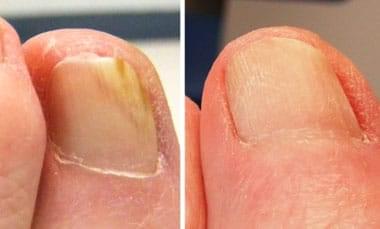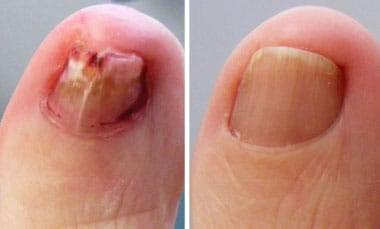Laser Treatment of Toenail Fungus
The laser wavelength passes through nail and normal skin, interacting with components of the fungal cell, which absorbs energy from the laser light. The energy is converted to heat, resulting in destruction of the fungal cells.
Laser treatment is successful approximately 50% of the time. This would indicate that treatment may lead to moderate to significant clearing of the nail plate. In comparison to oral antifungal medications which demonstrate a success rate of 70%, the laser treatment would be quite attractive when considering the possible side effects associated with use of these medications.
Following the initial treatment, evaluation in six months is undertaken. If indicated, further treatments may be rendered as necessary, determined by the appearance of the treated nail plates.
No anesthetic is required. Discomfort during the procedure is very minimal and lasts for only seconds.
Even after the fungus is killed with the laser treatment, nails can remain susceptible to future infection. As a preventative measure, a regimen of topical antifungal agents will be initiated following treatment.
Although FDA cleared for treatment of nail fungus, insurance carriers consider treatment with a laser for any skin condition a cosmetic procedure and therefore do not reimburse for treatment. Treatment may however be paid for with HSA or Flexible Spending Account funds.


